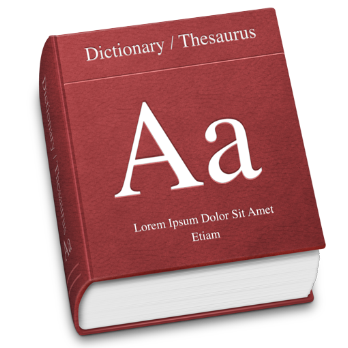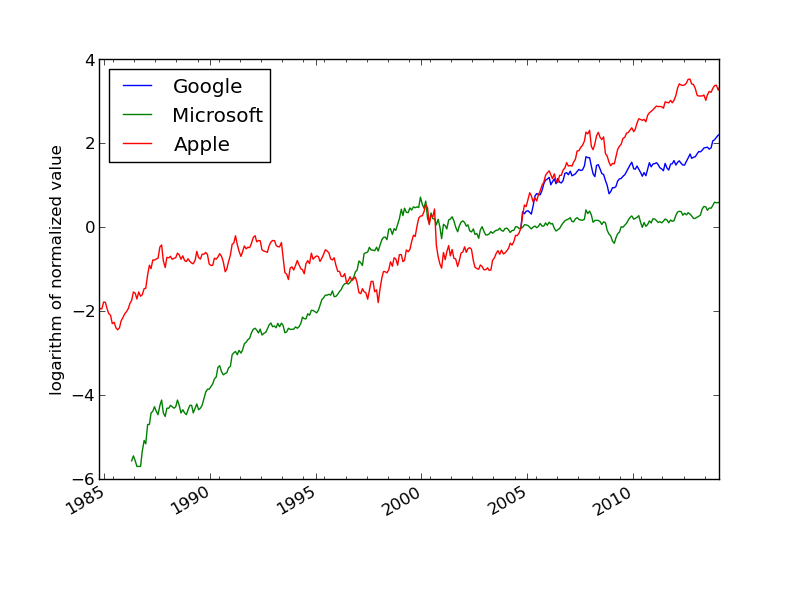
The main focus in the course is on working with files, dictionaries and strings. The book has additional material on how to utilize data from the Internet.
figfiles = {'fig1.pdf': 81761, 'fig2.png': 8754}
figfiles['fig3.png'] = os.path.getsize(filename)
for name in figfiles:
print 'File size of %g is %d:' % (name, figfiles[name])

[1,3,-1])
Suppose we need to store the temperatures in Oslo, London and Paris.
List solution:
temps = [13, 15.4, 17.5]
# temps[0]: Oslo
# temps[1]: London
# temps[2]: Paris
print 'The temperature in Oslo is', temps[0]
Can look up a temperature by mapping city to index to float
But it would be more natural to write temps[Oslo]!
# Initialize dictionary
temps = {'Oslo': 13, 'London': 15.4, 'Paris': 17.5}
# Applications
print 'The temperature in London is', temps['London']
print 'The temperature in Oslo is', temps['Oslo']
Important:
Oslo, is called key, while temps['Oslo']
is the associated value
Two ways of initializing a collection of key-value pairs:
mydict = {'key1': value1, 'key2': value2, ...}
temps = {'Oslo': 13, 'London': 15.4, 'Paris': 17.5}
# or
mydict = dict(key1=value1, key2=value2, ...)
temps = dict(Oslo=13, London=15.4, Paris=17.5)
Add a new element to a dict (dict = dictionary):
>>> temps['Madrid'] = 26.0
>>> print temps
{'Oslo': 13, 'London': 15.4, 'Paris': 17.5,
'Madrid': 26.0}
for key in dictionary:
value = dictionary[key]
print value
Example:
>>> for city in temps:
... print 'The %s temperature is %g' % (city, temps[city])
...
The Paris temperature is 17.5
The Oslo temperature is 13
The London temperature is 15.4
The Madrid temperature is 26
Note: the sequence of keys is arbitrary! Use sort if you need a particular sequence:
for city in sorted(temps): # alphabetic sort of keys
value = temps[city]
print value
Does the dict have a particular key?
>>> if 'Berlin' in temps:
... print 'Berlin:', temps['Berlin']
... else:
... print 'No temperature data for Berlin'
...
No temperature data for Berlin
>>> 'Oslo' in temps # standard boolean expression
True
Delete an element of a dict:
>>> del temps['Oslo'] # remove Oslo key w/value
>>> temps
{'Paris': 17.5, 'London': 15.4, 'Madrid': 26.0}
>>> len(temps) # no of key-value pairs in dict.
3
Python version 2:
>>> temps.keys()
['Paris', 'London', 'Madrid']
>>> temps.values()
[17.5, 15.4, 26.0]
Python version 3: temps.keys() and temps.values() are iterators,
not lists!
>>> for city in temps.keys(): # works in Py 2 and 3
>>> print city
...
Paris
Madrid
London
>>> keys_list = list(temps.keys()) # Py 3: iterator -> list
>>> t1 = temps
>>> t1['Stockholm'] = 10.0 # change t1
>>> temps # temps is also changed!
{'Stockholm': 10.0, 'Paris': 17.5, 'London': 15.4,
'Madrid': 26.0}
>>> t2 = temps.copy() # take a copy
>>> t2['Paris'] = 16
>>> t1['Paris'] # t1 was not changed
17.5
Recall the same for lists:
>>> L = [1, 2, 3]
>>> M = L
>>> M[1] = 8
>>> L[1]
8
>>> M = L[:] # take copy of L
>>> M[2] = 0
>>> L[2]
3
>>> d = {1: 34, 2: 67, 3: 0} # key is int
>>> d = {13: 'Oslo', 15.4: 'London'} # possible
>>> d = {(0,0): 4, (1,-1): 5} # key is tuple
>>> d = {[0,0]: 4, [-1,1]: 5} # list is mutable/changeable
...
TypeError: unhashable type: 'list'
The information in the polynomial
$$ p(x)=-1 + x^2 + 3x^7 $$
can be represented by a dict with power as key (int) and
coefficient as value (float):
p = {0: -1, 2: 1, 7: 3.5}
Evaluate such a polynomial \( \sum_{i\in I} c_ix^i \) for some \( x \):
def eval_poly_dict(poly, x):
sum = 0.0
for power in poly:
sum += poly[power]*x**power
return sum
Short pro version:
def eval_poly_dict2(poly, x):
# Python's sum can add elements of an iterator
return sum(poly[power]*x**power for power in poly)
The list index corresponds to the power, e.g., the data in \( -1 + x^2 + 3x^7 \) is represented as
p = [-1, 0, 1, 0, 0, 0, 0, 3]
The general polynomial \( \sum_{i=0}^N c_ix^i \) is stored as
[c0, c1, c2, ..., cN].
Evaluate such a polynomial \( \sum_{i=0}^N c_ix^i \) for some \( x \):
def eval_poly_list(poly, x):
sum = 0
for power in range(len(poly)):
sum += poly[power]*x**power
return sum
Dictionaries need only store the nonzero terms. Compare dict vs list for the polynomial \( 1 - x^{200} \):
p = {0: 1, 200: -1} # len(p) is 2
p = [1, 0, 0, 0, ..., 200] # len(p) is 201
Dictionaries can easily handle negative powers, e.g., \( {1\over2}x^{-3} + 2x^4 \)
p = {-3: 0.5, 4: 2}
print eval_poly_dict(p, x=4)
infile = open(filename, 'r') # open file for reading
line = infile.readline() # read the next line
filestr = infile.read() # read rest of file into string
lines = infile.readlines() # read rest of file into list
for line in infile: # read rest of file line by line
infile.close() # recall to close!
Oslo: 21.8
London: 18.1
Berlin: 19
Paris: 23
Rome: 26
Helsinki: 17.8
Store in dict, with city names as keys and temperatures as values
infile = open('deg2.dat', 'r')
temps = {} # start with empty dict
for line in infile.readlines():
city, temp = line.split()
city = city[:-1] # remove last char (:)
temps[city] = float(temp)
table.dat:
A B C D
1 11.7 0.035 2017 99.1
2 9.2 0.037 2019 101.2
3 12.2 no no 105.2
4 10.1 0.031 no 102.1
5 9.1 0.033 2009 103.3
6 8.7 0.036 2015 101.9
Create a dict data[p][i] (dict of dict) to hold measurement no. i
(1, 2, etc.) of property p ('A', 'B', etc.)
{} as valuesno,
convert to float and store
Date,Open,High,Low,Close,Volume,Adj Close
2014-02-03,502.61,551.19,499.30,545.99,12244400,545.99
2014-01-02,555.68,560.20,493.55,500.60,15698500,497.62
2013-12-02,558.00,575.14,538.80,561.02,12382100,557.68
2013-11-01,524.02,558.33,512.38,556.07,9898700,552.76
2013-10-01,478.45,539.25,478.28,522.70,12598400,516.57
...
1984-10-01,25.00,27.37,22.50,24.87,5654600,2.73
1984-09-07,26.50,29.00,24.62,25.12,5328800,2.76
Date,Open,High,Low,Close,Volume,Adj Close
2014-02-03,502.61,551.19,499.30,545.99,12244400,545.99
2014-01-02,555.68,560.20,493.55,500.60,15698500,497.62
2013-12-02,558.00,575.14,538.80,561.02,12382100,557.68
2013-11-01,524.02,558.33,512.38,556.07,9898700,552.76
2013-10-01,478.45,539.25,478.28,522.70,12598400,516.57
...
1984-10-01,25.00,27.37,22.50,24.87,5654600,2.73
1984-09-07,26.50,29.00,24.62,25.12,5328800,2.76
File format:
See the book for all details. If you understand this quite comprehensive example, you know and understand a lot!
Much computer history in this plot:

>>> s = 'This is a string'
>>> s.split()
['This', 'is', 'a', 'string']
>>> 'This' in s
True
>>> s.find('is')
4
>>> ', '.join(s.split())
'This, is, a, string'

>>> s = 'Berlin: 18.4 C at 4 pm'
Strings behave much like lists/tuples - they are a sequence of characters:
>>> s[0]
'B'
>>> s[1]
'e'
>>> s[-1]
'm'
Substrings are just as slices of lists and arrays:
>>> s
'Berlin: 18.4 C at 4 pm'
>>> s[8:] # from index 8 to the end of the string
'18.4 C at 4 pm'
>>> s[8:12] # index 8, 9, 10 and 11 (not 12!)
'18.4'
>>> s[8:-1]
'18.4 C at 4 p'
>>> s[8:-8]
'18.4 C'
Find start of substring:
>>> s.find('Berlin') # where does 'Berlin' start?
0 # at index 0
>>> s.find('pm')
20
>>> s.find('Oslo') # not found
-1
>>> 'Berlin' in s:
True
>>> 'Oslo' in s:
False
>>> if 'C' in s:
... print 'C found'
... else:
... print 'no C'
...
C found
s.replace(s1, s2): replace s1 by s2
>>> s.replace(' ', '__')
'Berlin:__18.4__C__at__4__pm'
>>> s.replace('Berlin', 'Bonn')
'Bonn: 18.4 C at 4 pm'
Example: replace the text before the first colon by 'Bonn'
>>> s
'Berlin: 18.4 C at 4 pm'
>>> s.replace(s[:s.find(':')], 'Bonn')
'Bonn: 18.4 C at 4 pm'
1) s.find(':') returns 6, 2) s[:6] is 'Berlin', 3) Berlin
is replaced by 'Bonn'
s.split(sep): split s into a list of substrings separated by sep
(no separator implies split wrt whitespace):
>>> s
'Berlin: 18.4 C at 4 pm'
>>> s.split(':')
['Berlin', ' 18.4 C at 4 pm']
>>> s.split()
['Berlin:', '18.4', 'C', 'at', '4', 'pm']
Try to understand this one:
>>> s.split(':')[1].split()[0]
'18.4'
>>> deg = float(_) # _ represents the last result
>>> deg
18.4
\n on Unix/Linux/Mac, \r\n on Windows
>>> t = '1st line\n2nd line\n3rd line' # Unix-line
>>> print t
1st line
2nd line
3rd line
>>> t.split('\n')
['1st line', '2nd line', '3rd line']
>>> t.splitlines()
['1st line', '2nd line', '3rd line']
>>> t = '1st line\r\n2nd line\r\n3rd line' # Windows
>>> t.split('\n')
['1st line\r', '2nd line\r', '3rd line'] # not what we want
>>> t.splitlines() # cross platform!
['1st line', '2nd line', '3rd line']
You cannot change a string in-place (as you can with lists and arrays) - all changes of a strings results in a new string
>>> s[18] = 5
...
TypeError: 'str' object does not support item assignment
>>> # build a new string by adding pieces of s:
>>> s2 = s[:18] + '5' + s[19:]
>>> s2
'Berlin: 18.4 C at 5 pm'
>>> s = ' text with leading/trailing space \n'
>>> s.strip()
'text with leading/trailing space'
>>> s.lstrip() # left strip
'text with leading/trailing space \n'
>>> s.rstrip() # right strip
' text with leading/trailing space'
>>> '214'.isdigit()
True
>>> ' 214 '.isdigit()
False
>>> '2.14'.isdigit()
False
>>> s.lower()
'berlin: 18.4 c at 4 pm'
>>> s.upper()
'BERLIN: 18.4 C AT 4 PM'
>>> s.startswith('Berlin')
True
>>> s.endswith('am')
False
>>> ' '.isspace() # blanks
True
>>> ' \n'.isspace() # newline
True
>>> ' \t '.isspace() # TAB
True
>>> ''.isspace() # empty string
False
We can put strings together with a delimiter in between:
>>> strings = ['Newton', 'Secant', 'Bisection']
>>> ', '.join(strings)
'Newton, Secant, Bisection'
These are inverse operations:
t = delimiter.join(stringlist)
stringlist = t.split(delimiter)
Split off the first two words on a line:
>>> line = 'This is a line of words separated by space'
>>> words = line.split()
>>> line2 = ' '.join(words[2:])
>>> line2
'a line of words separated by space'
(1.3,0) (-1,2) (3,-1.5)
(0,1) (1,0) (1,1)
(0,-0.01) (10.5,-1) (2.5,-2.5)
lines = open('read_pairs.dat', 'r').readlines()
pairs = [] # list of (n1, n2) pairs of numbers
for line in lines:
words = line.split()
for word in words:
word = word[1:-1] # strip off parenthesis
n1, n2 = word.split(',')
n1 = float(n1); n2 = float(n2)
pair = (n1, n2)
pairs.append(pair)
[(1.3, 0.0),
(-1.0, 2.0),
(3.0, -1.5),
(0.0, 1.0),
(1.0, 0.0),
(1.0, 1.0),
(0.0, -0.01),
(10.5, -1.0),
(2.5, -2.5)]
Suppose the file format
(1.3, 0) (-1, 2) (3, -1.5)
...
was slightly different:
[(1.3, 0), (-1, 2), (3, -1.5),
...
]
Running eval on the perturbed format produces the desired list!
text = open('read_pairs2.dat', 'r').read()
text = '[' + text.replace(')', '),') + ']'
pairs = eval(text)
The text is a mix of HTML commands and the text displayed in the browser:
<html>
<body bgcolor="orange">
<h1>A Very Simple Web Page</h1> <!-- headline -->
Ordinary text is written as ordinary text, but when we
need headlines, lists,
<ul>
<li><em>emphasized words</em>, or
<li> <b>boldfaced words</b>,
</ul>
we need to embed the text inside HTML tags. We can also
insert GIF or PNG images, taken from other Internet sites,
if desired.
<hr> <!-- horizontal line -->
<img src="http://www.simula.no/simula_logo.gif">
</body>
</html>

oxforddata.txt to a local file Oxford.txt:
import urllib
baseurl = 'http://www.metoffice.gov.uk/climate/uk/stationdata'
filename = 'oxforddata.txt'
url = baseurl + '/' + filename
urllib.urlretrieve(url, filename='Oxford.txt')
Oxford
Location: 4509E 2072N, 63 metres amsl
Estimated data is marked with a * after the value.
Missing data (more than 2 days missing in month) is marked by ---.
Sunshine data taken from an automatic ...
yyyy mm tmax tmin af rain sun
degC degC days mm hours
1853 1 8.4 2.7 4 62.8 ---
1853 2 3.2 -1.8 19 29.3 ---
1853 3 7.7 -0.6 20 25.9 ---
1853 4 12.6 4.5 0 60.1 ---
1853 5 16.8 6.1 0 59.5 ---
...
2010 5 17.6 7.3 0 28.6 207.4
2010 6 23.0 11.1 0 34.5 230.5
2010 7 23.3* 14.1* 0* 24.4* 184.4* Provisional
2010 10 14.6 7.4 2 43.5 128.8 Provisional
local_file = 'Oxford.txt'
infile = open(local_file, 'r')
data = {}
data['place'] = infile.readline().strip()
data['location'] = infile.readline().strip()
# Skip the next 5 lines
for i in range(5):
infile.readline()
data['data'] ={}
for line in infile:
columns = line.split()
year = int(columns[0])
month = int(columns[1])
if columns[-1] == 'Provisional':
del columns[-1]
for i in range(2, len(columns)):
if columns[i] == '---':
columns[i] = None
elif columns[i][-1] == '*' or columns[i][-1] == '#':
# Strip off trailing character
columns[i] = float(columns[i][:-1])
else:
columns[i] = float(columns[i])
for line in infile:
...
tmax, tmin, air_frost, rain, sun = columns[2:]
if not year in data['data']:
data['data'][year] = {}
data['data'][year][month] = {'tmax': tmax,
'tmin': tmin,
'air frost': air_frost,
'sun': sun}
| Construction | Meaning |
|---|---|
a = {} | initialize an empty dictionary |
a = {'point': [0,0.1], 'value': 7} | initialize a dictionary |
a = dict(point=[2,7], value=3) | initialize a dictionary w/string keys |
a.update(b) | add/update key-value pairs from b in a |
a.update(key1=value1, key2=value2) | add/update key-value pairs in a |
a['hide'] = True | add new key-value pair to a |
a['point'] | get value corresponding to key point |
for key in a: | loop over keys in unknown order |
for key in sorted(a): | loop over keys in alphabetic order |
'value' in a | True if string value is a key in a |
del a['point'] | delete a key-value pair from a |
list(a.keys()) | list of keys |
list(a.values()) | list of values |
len(a) | number of key-value pairs in a |
isinstance(a, dict) | is True if a is a dictionary |
s = 'Berlin: 18.4 C at 4 pm'
s[8:17] # extract substring
s.find(':') # index where first ':' is found
s.split(':') # split into substrings
s.split() # split wrt whitespace
'Berlin' in s # test if substring is in s
s.replace('18.4', '20')
s.lower() # lower case letters only
s.upper() # upper case letters only
s.split()[4].isdigit()
s.strip() # remove leading/trailing blanks
', '.join(list_of_words)